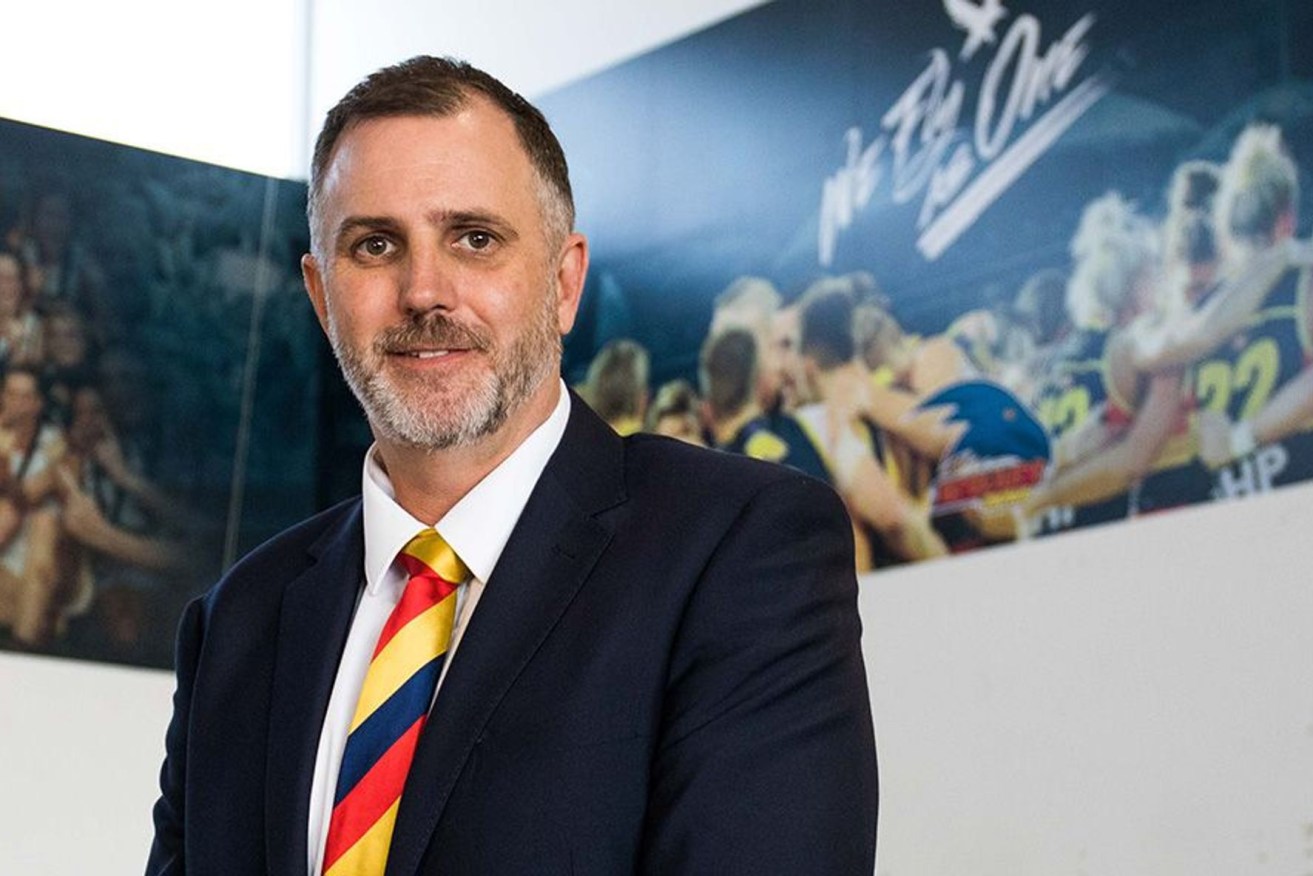Your views: on Crows and electric car tax
Today, readers comment on Adelaide Football Club’s rebuild, and incentives to go electric over internal combustion.

Crows CEO Tim Silvers. Photo: Supplied / Adelaide Football Club
Commenting on the story: Hotel barons and IT consultants? New Crows boss reveals prospects for growth
Good grief. And here was me thinking they might get back to, and concentrate on, playing football. – Steven Harrison
My understanding is that the 2014 sale of the West Lakes football precinct owned by the South Australian Football Commission, and orchestrated by its chairman John Olsen, did not include the main football oval, which is leased to the Crows until 2048 after which the land will be vested to the City of Charles Sturt Council.
At the time of SANFL’s land sale to developer Commercial & General in November 2014, Olsen said the Commission had an obligation to the Adelaide Crows to maintain the main football oval as a training base. I believe that lease obligation commenced in 2008, expiring in 2048.
Olsen admitted in 2014 that the cost to SANFL of maintaining the main oval for the Crows to train on was then $1.3m annually. The Crows valued the benefits to the club at $2m a year.
In June 2018, demolition of the spectator infrastructure at Football Park (known as AAMI Stadium) was commenced, with the main oval left intact as the Crows training ground until 2048 as per their lease. As explained by the SANFL Chief Executive Jake Parkinson, the oval would be surrounded by a picket fence outside training times and be freely accessible to the public, but closed for Crows training.
The Crows administration offices, training facilities, merchandise shop and other commercial businesses were not affected by the demolition.
My simple arithmetic calculates that if the Crows’ lease continues until 2048, the cost to SANFL would be in the range of $43m–$68m in today’s dollars for maintaining the Crows training ground. This cost alone to SANFL is potentially more than the reported 2014 $71m sale of the whole West Lakes football precinct precinct sans the main oval, and that sum will be realised only after progressive payments are made by the developer to SANFL until 2027.
I wonder what the members of the eight SANFL clubs make of this deal. – Philip Groves
Commenting on the story: Minority Marshall Govt doesn’t have numbers to introduce EV tax
Despite what the State Treasurer says, an exclusive electric vehicles road tax is premature without a substantive revenue source. It threatens to make EV ownership less attractive and suppress an uptake already very slow in Australia compared with other nations.
The opportunity cost of such a tax is significant. It includes substantial foregone health and environmental benefits, plus self-sufficiency and competitiveness, given Australia is severely exposed to oil shocks, and has affordable renewable energy most nations would envy that can be harnessed cost-effectively to support more jobs if we promote early electrification of transport.
If a Federal diminishing fuel excise is the only problem that should worry us, and things like climate change, health and hospital bills, technological advancement and economic resilience don’t matter, then sure, encourage gas-guzzlers! But, as any kind of fuel efficiency or substitution, not EV technology alone, dries up the fuel excise – including use of public transport or bicycles – why just pick on the latest entry to the market?
In reality, a road tax on EV users (few in number) taxes virtue, and a technology that other SA Government policies actively support. Let’s hope delay and opposition sparks a ‘big picture’ review of outdated State and Federal policies addressing all of the issues that matter, and options including a carbon price.
After all, if there’s a case that road users should pay, there’s a compelling one that polluters should pay. – Jim Allen




